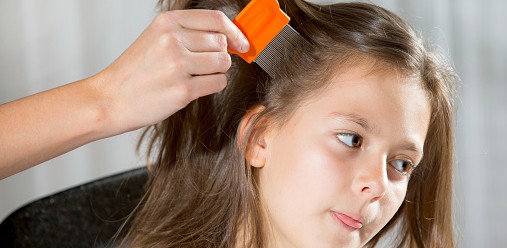Drug-Resistant Head Lice
Every year, millions of school aged children get head lice. Typically this has been more of a nuisance problem than a serious illness.
Lice are considered ectoparasites that live exclusively on the human scalp and feed off of human blood. Head lice are wingless insects that spread by close contact between people such as with sharing headwear, combs, brushes, towels and clothes. Head lice live approximately 28 – 30 days and multiply quickly. Female lice can lay as many as 90 eggs and within 15-20 days mature into adult lice. Itching is the number one symptom of lice infestation and may take up to several weeks before this starts. Head lice do not transmit communicable diseases.
It is estimated that as many as 12 million children, most commonly pre and elementary school aged, are treated in the U.S. annually for this disease. Treatment is usually by medication containing the active ingredient, permethrin.
Unfortunately, treatment of head lice is becoming a complex issue. A research team from Southern Illinois University collected lice samples from individuals in over 30 states. Of the samples collected, 104 out of 109 lice populations had gene mutations leading to treatment resistence. To date, more than 25 states have reported resistant head lice. It is believed that resistance to standard medications developed just as antibiotic resistance has. The overuse and misuse of permethrin in this case has led to the development of super lice which make them immune to standard treatments.
Fortunately, several pharmaceutical companies have developed other products that are effective against head lice. Many of these require a doctor’s prescription. The use of home remedies including olive oil, coconut oil, clove oil, and essential oils such as tea tree have also been reported treatments for head lice. While many of these are considered “natural”, the safety and efficacy is unknown.
Keys to treating head lice include using an effective treatment (prescription medication, OTC medication, or natural home remedy), combining the hair carefully to remove nits, vacuuming the home and washing suspected clothing and linens, and daily head checks until infestation is gone. Management of head lice is easier the earlier infestation is identified.
References:
Yook KS et al. In Vitro and In Vivo Evaluation of Infestation Deterrents Against Lice. J. Med Entomology. 2015 2015: 52(5):970-978.

